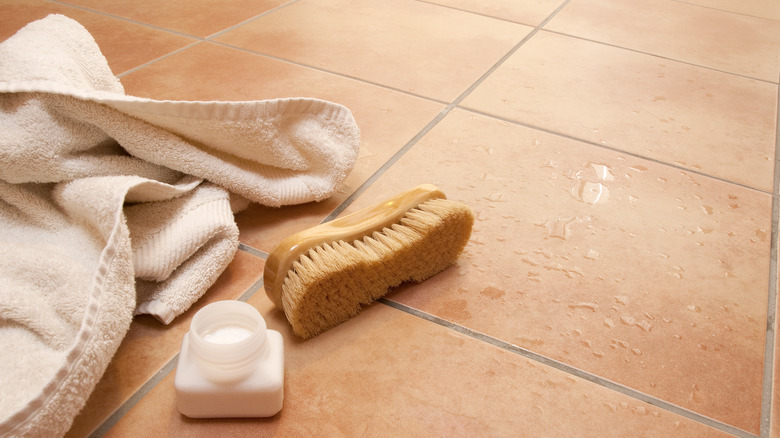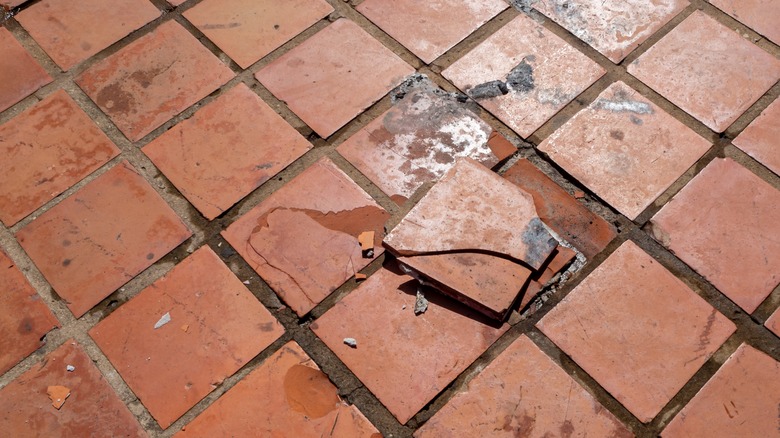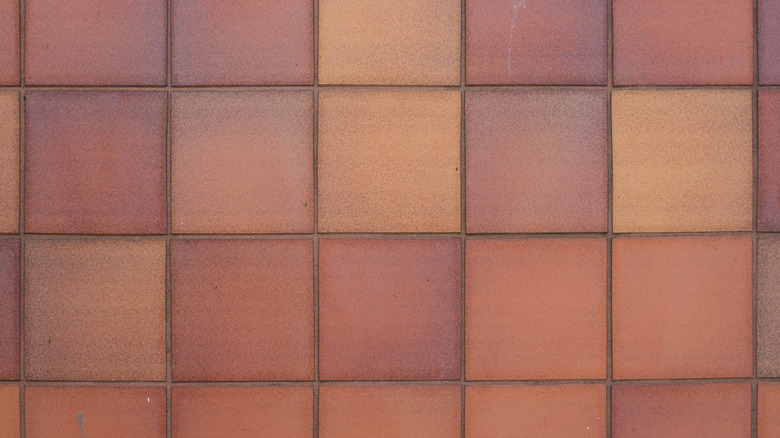Major Downsides That'll Make You Rethink Choosing Terracotta Floors For Your Home
We may receive a commission on purchases made from links.
When you want to deliver earthy tones for your home in a highly durable flooring option, terracotta flooring is a popular choice. This material can last for decades while delivering red and brown colors from the refined clay to create an earthy feel. It's been used for centuries in a variety of situations, so it's a trusted material. Even though it has some advantages, terracotta floors are far from perfect. There are some significant downsides that you should be aware of before you choose to install this material in your home.
The primary downside of terracotta floors is that the material is naturally porous. During the process of making terracotta, manufacturers must bake it at extremely high temperatures, which causes the clay to become porous. The baking process also gives this material its durability, so there is a benefit to this process. However, the porosity of terracotta means that it allows moisture and air to move through the clay. This is ideal for a planter, but it's not as desirable for flooring.
The porosity of the clay means that liquid stains and soils can penetrate the material, causing issues with discoloration. This can lead to the buildup of dangerous bacteria in the clay. Because of the porosity, you have to be careful about using certain cleaning agents on terracotta flooring, such as vinegar, which can cause erosion. Mild dish soap and warm water is the best way to avoid issues with the porosity.
Terracotta tiles can be difficult to install and repair
Another downside regarding terracotta flooring tiles is that they can be difficult to install. Repairing them is another challenge should you have any issues after installation. Although there are many creative ways to use terracotta tiles in your home, the hassles associated with installing and maintaining them can make you reconsider your choice.
When installing this flooring, if you select handmade terracotta tiles, they may have irregularities that make it difficult to create a uniform layout. You also may find some differences in color from piece to piece when using handmade products, which complicates the beauty of the layout. To avoid these issues, stick with machine-cut pieces, which will have better uniformity but lose some of the charm you receive with handcrafted tiles.
Another downside is one that you may not expect to find. Even though the terracotta flooring is durable, if you drop a heavy object onto it, it could suffer a chip or some breakage. You would have to chisel out the broken tile – carefully — to replace it with another full piece. You could crack nearby pieces if you aren't careful with the chisel. It works best to use a drill and to create a few small holes in the broken piece, as this will loosen it from the subfloor before chiseling. Or you can patch a chipped area with a terracotta tile repair kit, like this one from Amazon.
Why it's difficult to maintain terracotta floors
Another drawback to using terracotta tile flooring is that you need to maintain it regularly. For starters, it's best to seal the flooring immediately after installation or to purchase it with protective glazing applied at the time of manufacturing. If you want to use the tile in areas that will have water exposure, such as a bathroom or kitchen, sealing or glazing is a must. It combats the porosity of the terracotta material while ensuring that it continues to look great, even in high-traffic areas.
"Terracotta can be enhanced by the seal you put on it," Daniel Dixon, a California-based tile construction expert, tells HGTV. "It is highly recommended that it be sealed, and if it's for kitchen use, you must seal it particularly well." Simply put, terracotta flooring will not give you the advantage in durability that you are expecting if it isn't protected.
This need for protection requires regular maintenance as well. The protective layer breaks down over time as you use the floor. Most people will need to reseal the flooring every two or three years, although the frequency with which you will have to apply the protectant again depends on the amount of wear and tear that the terracotta must endure. If you are diligent about cleaning the tiles regularly, you probably can lengthen the amount of time before you need to apply protection to the flooring again.


